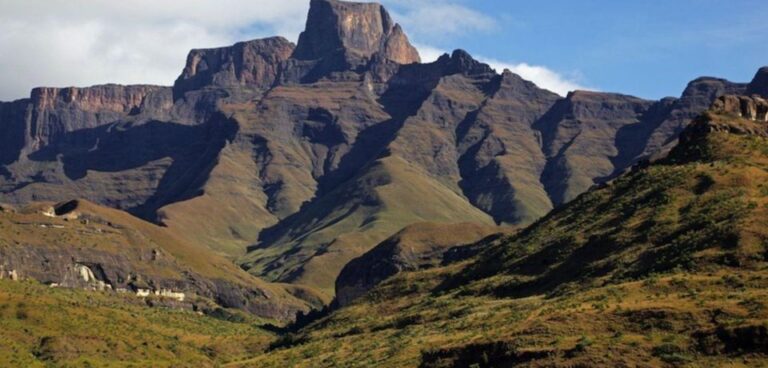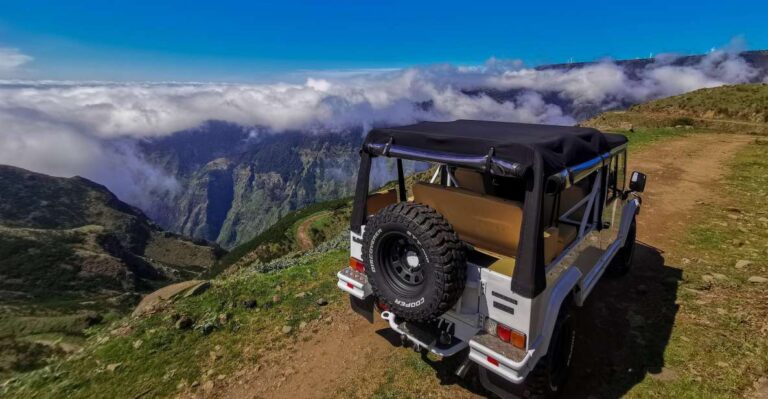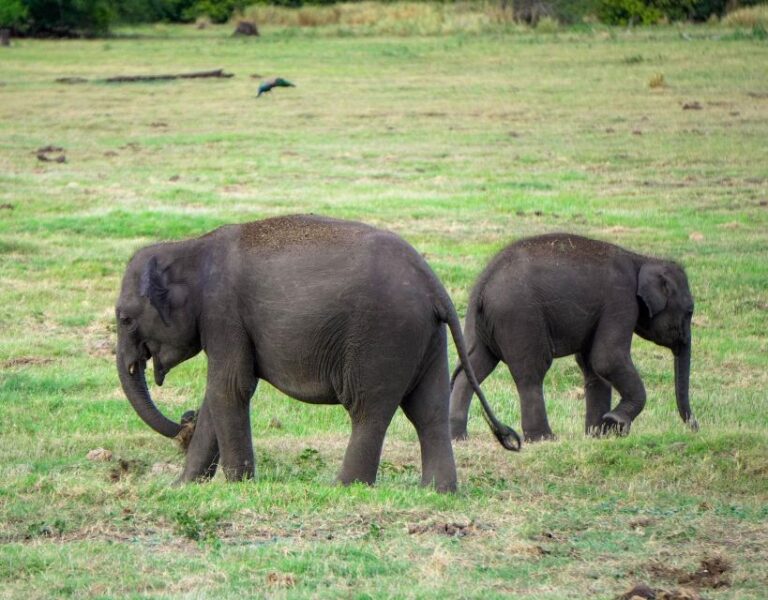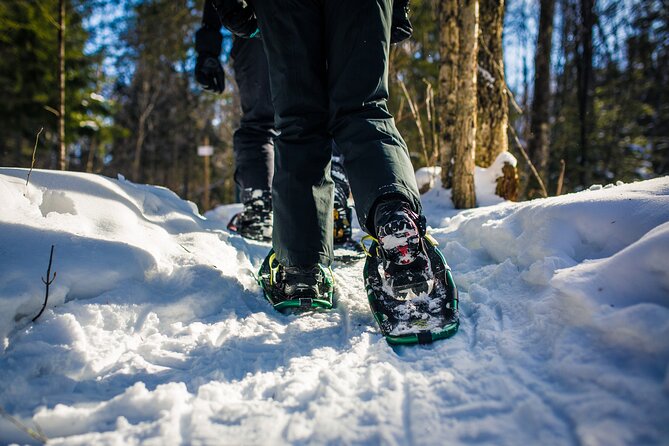Rainbow Mountain
Trekking through the Andes of Peru, travelers are greeted by the awe-inspiring sight of Rainbow Mountain, a natural marvel renowned for its vibrant hues etched into the rugged terrain.
But beyond its striking appearance lies a world of geological wonders and cultural significance waiting to be uncovered.
As visitors navigate the challenging terrain and unpredictable weather conditions, a deeper understanding of this mystical place emerges.
But what secrets does Rainbow Mountain hold beyond its colorful facade?
Key Points
- Vibrant colors from mineral deposits
- Moderate hike, 6-8 hours duration
- Cultural insights and ancient traditions
- Altitude over 5,000 meters, acclimatization crucial
Here's some more nearby activities we've reviewed
Location and Altitude
Nestled in the Andes mountains of Peru, Rainbow Mountain sits majestically at an altitude of over 5,000 meters above sea level, offering breathtaking views to adventurous travelers who embark on the journey to explore its colorful slopes. The mountain is located in the Cusco region, near the Ausangate mountain, which is considered a sacred site by the locals.
At such a high altitude, visitors may experience the effects of altitude sickness due to the reduced oxygen levels. Symptoms can include headaches, dizziness, and shortness of breath. It’s essential for travelers to acclimatize properly before attempting the hike to Rainbow Mountain to minimize the risk of altitude-related issues.
Plus, the extreme altitude can also make physical exertion more challenging, requiring careful planning and preparation.
Geological Formation and Colors
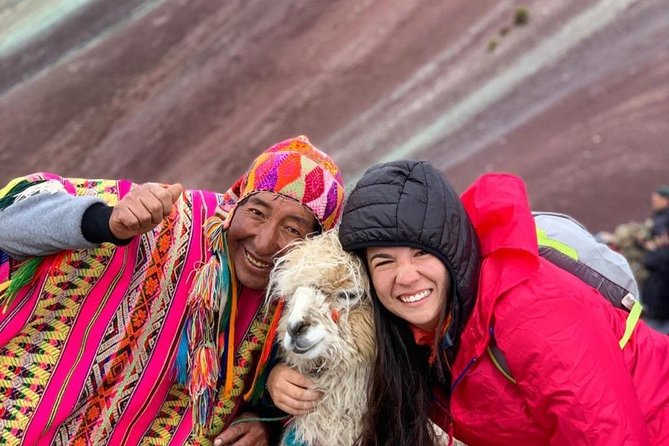
Perched high in the Andes mountains of Peru, Rainbow Mountain captivates with its striking geological formation and vibrant colors that have been a result of unique mineral deposits over centuries.
The formation process of Rainbow Mountain involves the layering of mineral deposits, including iron oxide, sulfur, and copper, which have oxidized to create the stunning array of colors seen today. These mineral deposits were exposed through the gradual erosion of the mountain, unveiling the distinct bands of colors that make Rainbow Mountain a natural wonder.
The color variations, ranging from deep reds to vibrant yellows and greens, are a testament to the diverse mineral composition of the mountain, offering visitors a mesmerizing display of nature’s artistry.
Weather and Best Time to Visit
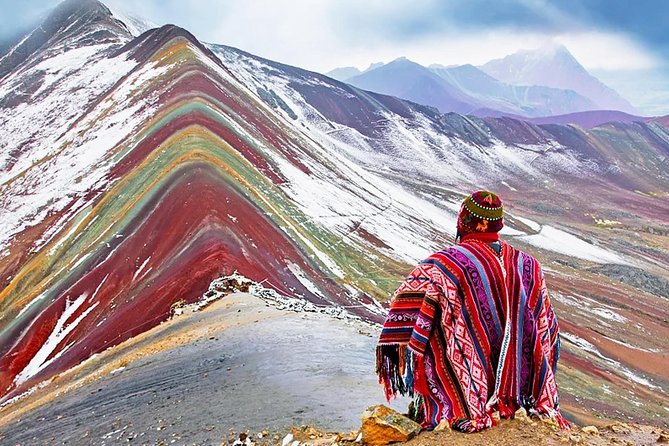
For travelers planning a visit to Rainbow Mountain, understanding the weather patterns and the best time to go can significantly enhance their experience. The climate conditions around Rainbow Mountain are characterized by cool temperatures due to its high altitude, with daytime temperatures ranging from 10 to 15 degrees Celsius. Seasonal variations play a crucial role in determining the best time to visit.
The dry season, from May to October, is generally recommended for its clearer skies and lesser chance of rain, providing optimal hiking conditions. In contrast, the wet season, from November to April, brings more precipitation, potentially making the trails slippery and muddy. Travelers should consider these factors when planning their visit to Rainbow Mountain to ensure a pleasant and memorable experience.
Hiking Difficulty and Duration
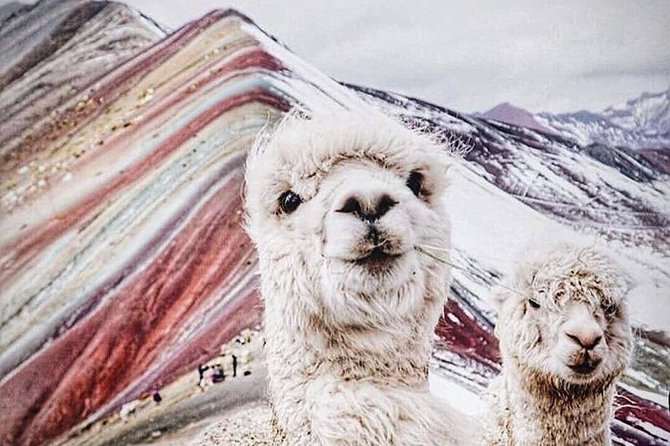
When embarking on the Rainbow Mountain trek, visitors can anticipate a moderate level of hiking difficulty that typically spans about 7 to 8 miles round trip, lasting approximately 6 to 8 hours, depending on individual pace and weather conditions.
- Hiking Challenges
- Altitude sickness might affect some hikers due to the high elevation.
- Uneven terrain and steep inclines can pose challenges during the trek.
- Weather changes rapidly, so hikers must be prepared with appropriate gear.
- Limited restroom facilities along the trail may require proper planning.
- Proper hydration and snacks are essential for maintaining energy levels.
Time management is crucial to ensure a successful hike, allowing for breaks, acclimatization, and enjoying the breathtaking scenery without feeling rushed.
Cultural Significance and History
Visitors to Rainbow Mountain not only experience a challenging hike but also explore the rich cultural significance and history of this sacred site. Cultural rituals and historical preservation play a vital role in shaping the experience at Rainbow Mountain. The locals have preserved ancient traditions and ceremonies, which are occasionally shared with visitors, offering a unique insight into the Andean culture. Understanding the spiritual practices and beliefs tied to the mountain enhances the overall trekking adventure. Below is a table highlighting some key aspects of the cultural significance and history of Rainbow Mountain:
| Aspect | Details | Importance |
|---|---|---|
| Cultural Rituals | Ceremonies performed at the mountain | Spiritual |
| Historical Sites | Ancient ruins and artifacts | Preservation |
| Local Traditions | Traditional practices of the Andean people | Cultural identity |
Local Flora and Fauna
Amidst the rugged terrain of Rainbow Mountain, a diverse array of indigenous flora and fauna thrives, enhancing the natural beauty of this unique landscape. The ecosystem supports a variety of plant life and wildlife, contributing to the richness of the region.
- The Andean condor soars high above, a symbol of freedom and power.
- Quinoa fields dot the landscape, showcasing the traditional agriculture practices of the local communities.
- The vibrant Peruvian lily, known for its colorful petals, adds a pop of color to the rocky terrain.
- Unfortunately, some species like the spectacled bear are endangered, highlighting the importance of wildlife conservation efforts.
- Visitors may also spot the elusive Andean fox, a master of camouflage in these harsh surroundings.
These elements form a delicate balance that deserves protection through sustainable practices and wildlife conservation initiatives.
Photography Tips and Views
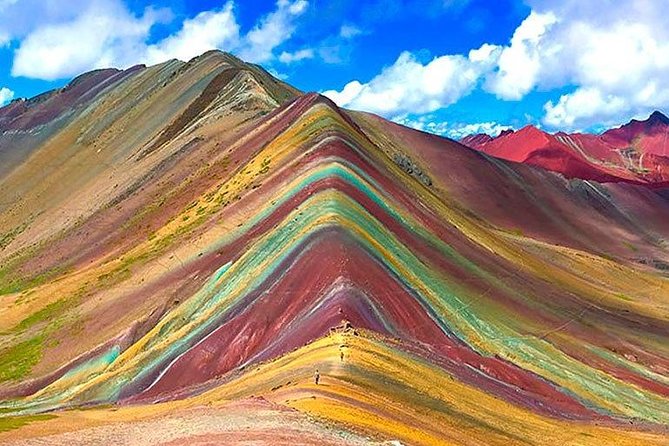
For capturing the stunning vistas of Rainbow Mountain, consider positioning yourself strategically to make the most of the natural lighting conditions.
When it comes to photography composition, try to frame your shots with leading lines to guide the viewer’s eye towards the colorful peaks. Incorporate elements in the foreground to add depth and perspective to your photos. Experiment with different angles and perspectives to create unique and captivating images.
Utilize lighting techniques such as backlighting to enhance the vibrant colors of the mountain. Remember to adjust your camera settings to ensure proper exposure and focus.
Sustainable Tourism Practices
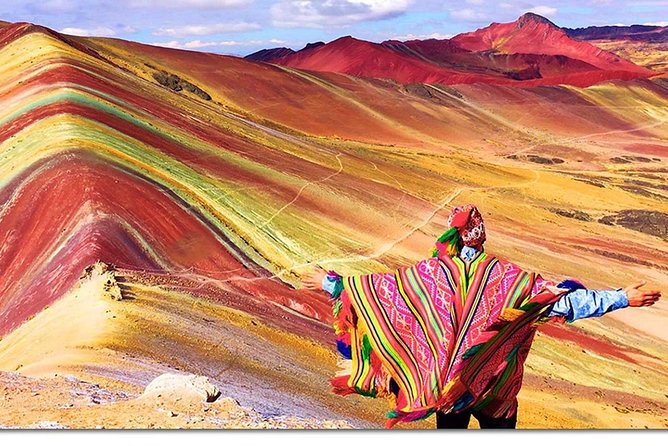
Implementing sustainable tourism practices at Rainbow Mountain involves minimizing environmental impact while supporting local communities through responsible travel initiatives. When visiting this natural wonder, it’s essential to prioritize community engagement and environmental protection.
To achieve this, consider the following:
- Partnering with local community organizations for guided tours.
- Supporting eco-friendly accommodation options in the area.
- Participating in community-led conservation projects.
- Educating visitors on the importance of preserving the ecosystem.
- Purchasing locally made souvenirs to contribute to the economic growth of the community.
Here's a few more nearby tours and experiences we have reviewed.
- Sacred Valley and Machu Picchu 2-Day Tour
- The Ultimate Sacred Valley Tour: 1 Day of Inca History, Lifestyle, Landscapes
- Machu Picchu Full Day Tour
- 4-Day Salkantay Trek With Sky Camp Stay
- Full-Day Rainbow Mountain & Red Valley Small-Group Trek From Cusco
- Inca Trail 4 Days to Machu Picchu – Panoramic Train
Common questions
Can Children Participate in This Rainbow Mountain Experience, or Is It Recommended for Adults Only?
Children can participate in this family-friendly experience. There are options suitable for all ages. The activity caters to both adults and kids, ensuring an inclusive adventure for families. It’s a great way to explore together.
Are There Restroom Facilities Available Along the Hiking Route to Rainbow Mountain?
Restroom availability along the hiking route is limited due to the high altitude effects. It is advisable to use facilities before starting the trek. Altitude can impact restroom needs, so preparation is essential for a comfortable experience.
Is There a Weight Limit or Fitness Requirement for Participating in the Hike to Rainbow Mountain?
Weight restrictions and fitness requirements vary based on the activity. It’s crucial to check guidelines beforehand to ensure safety and enjoyment. Always consult with the tour provider for specific details regarding any limitations or prerequisites.
Are There Any Specific Safety Precautions or Recommendations to Be Aware of Before Embarking on the Rainbow Mountain Trek?
Before embarking on any trek, safety precautions like checking weather conditions, informing someone of the plan, wearing appropriate gear, and carrying essentials are crucial. Recommendations include staying hydrated, pacing oneself, and being mindful of surroundings.
Are There Any Local Communities or Villages That Visitors Will Have the Opportunity to Interact With During the Rainbow Mountain Experience?
Visitors embarking on the Rainbow Mountain experience have the opportunity to interact with local communities and villages along the trek. This interaction provides a unique cultural experience, offering insights into the daily lives of the people living in the area.
Here's more of our most recent tour reviews happening neaby
- Inca Jungle Trek to Machu Picchu 4 Days
- Chinchero, Maras, Moray and Salt Mines From Cusco
- Machu Picchu 1 Day by Train From Cusco
- 2-Day Sacred Valley and Machu Picchu Tour By Train
- Transportation From Cusco to Montaña 7 Colores [Round Trip]
- Rainbow Mountain Cusco ( 1 Day Trip )
- From Cusco: Rainbow Mountain and Red Valley Full-Day Tour
- Rainbow Mountain Tour With Only 35 Minutes Hike
- Rainbow Mountain Full Day Tour From Cusco Thru Pitumarca
- 6 Days- Cusco Sacred Valley MachuPicchu Rainbow Mountain Humantay
- Full Day Tour in ATV by Montana 7 Colores Cusco
Last Words
To sum it up, Rainbow Mountain in Peru is a must-see destination for nature lovers and adventure seekers alike.
With its stunning colors, challenging hike, and rich cultural history, this natural wonder offers a truly unforgettable experience.
Whether you’re capturing the perfect photo or simply taking in the breathtaking views, Rainbow Mountain is sure to leave a lasting impression on all who visit.
Don’t miss out on this incredible opportunity to witness the beauty of Peru’s majestic landscape.


